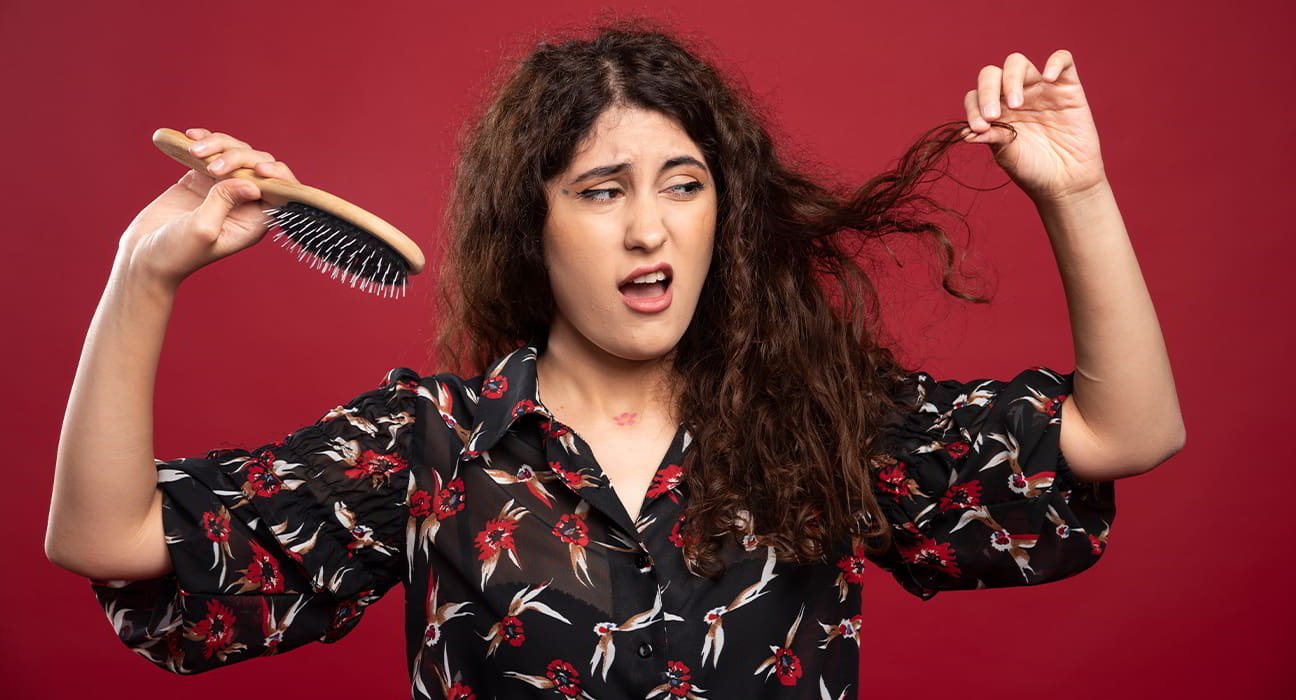The term “trichotillomania” (TTM), commonly referred to as “hair-pulling disorder,” was not originally used until the latter half of the 18th century, although it was initially mentioned in Greek literature. In these situations, the patient’s actions lead the hair to be continually plucked from any part of the body, giving the appearance of hair loss. This illness is linked to social stigma since it can significantly alter the patient’s appearance.
Understanding the disorder
There are no known causes of TTM, even though specialists believe several potential factors could contribute to the disorder. Among the possible contributing elements are:
- Genetics: Some DNA mutations might induce TTM. To verify this, more research is needed.
- Alterations in Brain Chemistry or Structure: People with TTM often have changes in certain areas of the brain or differences in brain chemistry.
- Coping Technique: Many TTM sufferers say that their condition began following a period of intense stress in their lives. Some say they became bored and began tugging their hair, which eventually became a habit.
Symptoms and criteria
The Diagnostic and Statistical Manual of Mental Disorders, Fifth Edition (DSM-5) published by the American Psychiatric Association lists the criteria for diagnosing TTM
- Hair loss is brought on by constant hair tugging.
- Making repeated attempts to cease this habit or reduce its frequency.
- There is no other ailment causing the hair tugging or hair loss (such as a skin-related sickness or problem).
- Feeling that pulling your hair has a bad impact on your life, particularly on your social and professional lives.
- There isn’t another mental health issue causing the hair-pulling. Body dysmorphia is one instance of this, in which a person pulls their hair out of concern that they are not looking well enough and are making an effort to change it.
OCD and TTM
Repetitive thoughts and behaviours are at the core of many different diseases and presentations that go under the umbrella of obsessive-compulsive disorders. OCD, also known as obsessive-compulsive disorder, is generally defined as an obsession characterized by recurrent thoughts or compulsions characterized by recurrent behaviours. Hair-pulling condition, known as trichotillomania (TTM), falls under this specific range of diseases. Treatment for TTM frequently entails counselling, medicine, or both. Some drugs for other mental health issues may benefit TTM, according to ongoing research; however, more studies are required before any particular drug is included in routine care.
Which drugs and therapies are applied?
Often, medication is insufficient to treat TTM. Medical professionals may combine medicines, therapy approaches, or both.
1. Medications
The following medications, either alone or in combination, can be used to treat TTM:
- Nutritional supplements: These are nutritional goods that can aid in the treatment of illnesses, including supplements containing amino acids.
- Drugs that prevent seizures: These drugs can aid with TTM in addition to helping with seizures and other conditions affecting muscle movements.
- Antidepressants: Tricyclic antidepressants and selective serotonin reuptake inhibitors, or SSRIs, can occasionally assist in lessening the urge to pull hair.
- Antipsychotics: These medications help your brain’s chemistry to return to normal. They treat a variety of ailments including schizophrenia, bipolar disorder, and dementia.
2. The following therapy modalities may be used to treat TTM:
- Peer support and group therapy: Certain kinds of group treatment or support may be helpful for those with TTM.
- Therapy for habit reversal: You will become more conscious of your routines and patterns of behaviour when you use this method. This therapy trains you to break habits like hair pulling by increasing your awareness. Out of all the TTM therapy options, this approach has the highest chance of success.
Additional TTM-related treatments
- Individuals who have TTM and experience scars or hair loss may require consultations with additional medical professionals. Occasionally, a dermatologist will help treat related skin damage or disorders.
- Plastic and reconstructive surgeons may also assist in skin grafting for affected body parts. Though hair regrowth isn’t always a possibility, other healthcare professionals can also supply answers in this area.
Impact on life
Trichotillomania can have dangerous effects. Possible complications include:
- Damage to the skin and hair: Recurrent hair pulling can damage the skin on your scalp or the area where the hair is pulled out, leading to infections and scarring. This may permanently impact hair growth.
- Issues at work and social life: Hair loss may cause you to shy away from social situations, educational possibilities, and career opportunities. You can use artificial eyelashes, arrange your hair to cover up bald spots, or wear wigs.
- suffering on an emotional level: Your illness and hair loss may lead you to feel angry, depressed, and ashamed. You may believe hair-pulling is beyond your control. You may experience problems with depression, anxiety, low self-esteem, and alcoholism or drug misuse.
- Trichophagia: The term “trichophagia,” which comes from the Greek words “tricho” for hair and “phage” for eating, describes the condition in which about 20% of affected individuals eat their hair after pulling it out. A big, tangled hairball that lodges in your digestive tract can result from eating your hair. The hairball can result in weight loss, vomiting, an intestinal blockage, and possibly death over several years.
Trichotillomania is a complex mental health condition that can have a significant impact on a person’s life. While the exact causes remain unclear, researchers believe that a combination of biological, psychological, and environmental factors contributes to the condition. The condition can lead to physical symptoms such as hair loss and skin irritation, as well as emotional distress, social isolation, and difficulties with relationships. Seeking professional help can be a crucial step in managing the condition and improving overall quality of life. If you or someone you know is struggling with trichotillomania, it is important to seek support and resources.
References +
https://www.mayoclinic.org/diseases-conditions/trichotillomania/symptoms-causes/syc 20355188
Trichotillomania. (2024, May 1). Cleveland Clinic. https://my.clevelandclinic.org/health/diseases/9880-trichotillomania
Pereyra, A. D., & Saadabadi, A. (2023, June 26). Trichotillomania. StatPearls – NCBI Bookshelf. https://www.ncbi.nlm.nih.gov/books/NBK493186












Leave feedback about this